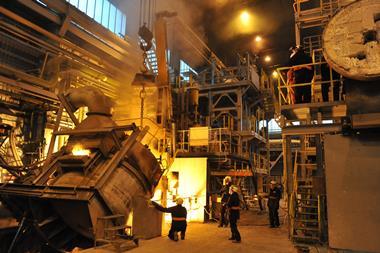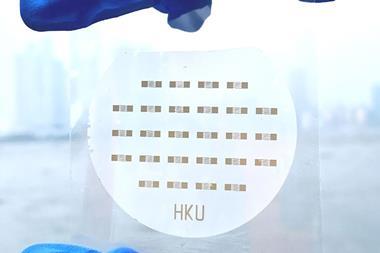A simple synthesis using ionic liquids reduces the cost of studying micro-porous oxide materials by NMR. This could help scientists uncover the chemistry and interactions that occur inside these materials.
The microporous structure of zeolites is used in a wide range of applications from catalysis through to gas separation however, studying interactions inside the pores is not trivial. Solid state NMR can probe the environment of 17O atoms lining the sides of the pores but unfortunately 17O has a very low natural abundance making isotopic enrichment the only practical way of conducting these experiments. The standard method of synthesising these compound uses expensive isotopically enriched water as the solvent but the majority of the enriched water ends up in bi-products or as waste solvent.
To reduce the cost of synthesising these enriched materials, a team of scientists led by Sharon Ashbrook and Russell Morris at the University of St Andrews, UK, have developed an ionothermal synthesis that replaces the water used as a solvent with an ionic liquid. This allows the team to reduce the amount of enriched water used to only a the few microlitres required as a reactant. The enriched water is expensive so this cuts down the cost as Sharon Ashbrook explains. We can reduce the cost of the enrichment from around £600 down to about £25 per synthesis,' she says. The team demonstrated their synthesis using an aluminophosphate zeolite which is used as a catalyst to convert methanol to olefins. Using this approach they enriched the zeolite to include 4% 17O2, which is approximately 100 times greater than the natural abundance. Multi-dimensional NMR experiments are heavily dependent on isotopic labelling so achieving this level of enrichment allows the team to cut the time required for NMR experiments to a practical level.
Stephen Wimperis, an expert in solid-state NMR at University of Glasgow, UK, welcomed the research saying 'I think this is an important paper; it holds out the prospect of us being able to expand greatly the range of applications of oxygen-17 NMR, which is a really powerful tool for the study of solid-state structure and dynamics.'
References
- J M Griffin et al,Chem. Sci., 2012, DOI: 10.1039/c2sc20155k






No comments yet